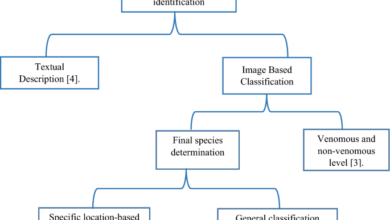Best of 2023: Top 9 Microservices Design Patterns

As we close out 2023, we at Cloud Native Now wanted to highlight the most popular articles of the year. Following is the latest in our series of the Best of 2023.
Microservices design patterns are a collection of best practices and solutions for designing the architecture of applications as small, independent services that can be deployed and scaled individually. They are the blueprints that guide the design of microservices architecture, especially for cloud-native applications that run on platforms like Kubernetes.
Microservices design patterns are gaining immense popularity due to their myriad benefits. They offer flexibility, scalability and the ability to independently develop and deploy parts of an application. However, as with any other technology, using microservices design patterns involves complexities. Understanding these patterns can help in tackling these challenges effectively.
Top Microservices Design Patterns
There are several microservices design patterns, each with its unique characteristics and use cases:
1. Aggregator Design Pattern
The Aggregator design pattern is one of the fundamental microservices patterns. It acts as a system gateway, consolidating responses from multiple services into one. This pattern is particularly useful when a client request involves multiple services to provide the required response.
The Aggregator orchestrates the interactions between services, reducing the complexity for the client. This pattern also provides a unified interface for the client, making it easier for the client to consume the services. However, it requires careful design and management to prevent it from becoming a bottleneck.
2. Proxy Design Pattern
Next on our list is the Proxy design pattern. This pattern acts as an intermediary between the client and the service. It can be used to perform various tasks such as logging, monitoring, security, and load balancing.
The Proxy pattern provides an additional layer of abstraction and control, which can be beneficial in a microservices architecture. It allows you to manage and configure services independently without impacting the client. However, it can add latency to the service calls, so it’s important to manage it efficiently.
3. Chain of Responsibility Pattern
The Chain of Responsibility pattern is a behavioral design pattern that decouples the sender and receiver of a request. This pattern is beneficial in a microservices architecture as it promotes loose coupling and allows you to add or remove services without disrupting the entire system and without requiring extensive microservices testing.
In this pattern, each service in the chain processes the request and decides whether to pass it on to the next service. This provides flexibility and control over the flow of the request. However, it requires careful design to ensure that the chain does not become too long or complex.
4. Branch Pattern
The Branch pattern, also known as the Fork-Join pattern, is a structural design pattern. It splits a task into multiple subtasks, processes them concurrently, and then combines the results. This pattern can significantly improve the performance of your application by leveraging parallel processing.
In a microservices architecture, the Branch pattern can be used to split a large task into smaller, independent services. This allows you to scale and manage each service independently, enhancing the overall scalability and reliability of your application.
5. Shared Database Pattern
The Shared Database pattern allows multiple services to share the same database. It simplifies data management and ensures data consistency across services.
However, the Shared Database pattern contradicts the core principle of microservices, which advocates for one database per service. Therefore, it should be used judiciously and only when the benefits outweigh the risks.
6. Circuit Breaker Pattern
The circuit breaker pattern is a crucial design pattern that helps to prevent a network or a service from receiving excessive requests when it’s already failing. It’s like an automatic switch that “trips” when it detects a failure, preventing further damage.
When a microservice sends a request to another service and it fails, it often retries the request. If the called service is down or struggling, these retries can exacerbate the problem, leading to resource exhaustion. By applying the circuit breaker pattern, we can avoid this situation. The pattern tracks the number of failed requests and “trips” the circuit breaker after a defined threshold. Once the circuit is open, it prevents further requests until the service is healthy again.
This pattern is not just about protecting the failing services but also about maintaining the stability and resilience of the entire microservices ecosystem. It gives the failing services time to recover and safeguards other services from cascading failures.
7. CQRS Pattern
CQRS, or Command Query Responsibility Segregation, is a design pattern that segregates the operations that read data (queries) from the ones that update data (commands) into separate models. This segregation provides flexibility, allowing you to scale, optimize and secure read and write operations independently.
In a traditional CRUD model, the same data model is used for read and write operations, which can lead to performance and concurrency issues in high-load systems. With CQRS, we can use different models optimized for specific operations. For example, we can use a denormalized model for fast reads and a normalized model for writes to maintain data consistency.
The CQRS pattern also provides better control over data access. We can implement stricter security rules on commands (write operations) than on queries (read operations). It also makes it easier to implement event sourcing, another powerful microservices design pattern.
8. Event Sourcing Pattern
Event sourcing is a design pattern that captures all changes to an application’s state as a sequence of events. This pattern is useful in systems where you need a high level of auditability or where the history of events is a crucial part of the business domain.
In traditional data storage, we only keep the latest state of data. If we update or delete data, the previous state is lost. With event sourcing, we store each state-changing event. Therefore, we can recreate any previous state of data by replaying these events.
Event sourcing also simplifies the handling of concurrent operations. Since each event represents a state change, we can manage concurrent operations by ordering these events. Moreover, it supports temporal queries, which allow us to ask questions like, “What was the state of data at a particular point in time?”
9. API Gateway Pattern
The API Gateway design pattern provides a single entry point for all client requests. It routes these requests to appropriate microservices. This pattern is essential in a microservices architecture, where you have numerous services with different interfaces.
Without an API Gateway, a client would need to interact with each service directly, which would be complex and inefficient. By using an API Gateway, we can simplify the client-side communication. The gateway can handle requests in one place, perform necessary transformations and route them to the appropriate services.
The API Gateway pattern also enables cross-cutting concerns like authentication, logging, rate limiting and caching. It acts as a policy enforcement point and provides a layer of abstraction between clients and services, enhancing security and maintainability.
How to Choose Microservices Design Patterns
Define the Technology Stack
Microservices are technology-agnostic, but any organization uses a limited set of technologies. Identify which programming languages, messaging systems, container orchestrators like Kubernetes and cloud platforms like AWS, you will use to build your microservices. Your choice of microservices patterns should match the available technologies and constraints.
Identify Communication Needs
The first step is to identify your communication needs. Different microservices design patterns offer different communication styles. For example, if you need asynchronous, non-blocking communication, you might choose the event-driven pattern. If you need to balance load among service instances, the service registry pattern might be suitable. Understanding your communication requirements will guide you toward the correct pattern.
Determine Scalability Requirements
Scalability is another critical factor. If your application needs to handle high load or if you expect rapid growth in the future, you need to choose a design pattern that supports scalability. Patterns like CQRS, API Gateway and Event Sourcing can help you build highly scalable microservices.
Consider Resilience and Fault Tolerance
In a distributed system like microservices, failures are inevitable. Therefore, it’s crucial to choose a design pattern that enhances the resilience and fault tolerance of your system. The Circuit Breaker pattern, for instance, prevents cascading failures and gives failing services time to recover.
Assess Security Concerns
Security is another vital aspect. You need to ensure that your microservices are secure from both external and internal threats. The API Gateway pattern can help here, as it acts as a policy enforcement point and prevents direct communication between clients and services.
Determine Operational Complexity
Finally, consider the operational complexity. Some design patterns might introduce additional complexity to your system. Therefore, you need to balance the benefits of a design pattern against the operational overhead it may introduce. You should adopt a design pattern only if its benefits outweigh the potential complexities.
Conclusion
Microservices design patterns are powerful tools that can help us build resilient, scalable and maintainable applications. However, it’s important to understand their strengths, weaknesses and applicability to make the right choice. This guide aimed to provide you with this understanding, and I hope it helps you in your journey toward mastering microservices design patterns.



